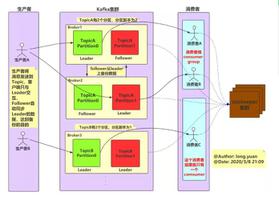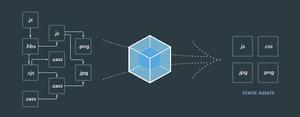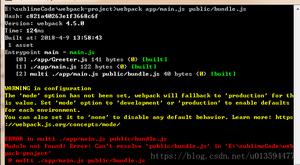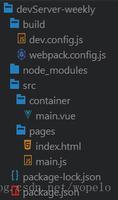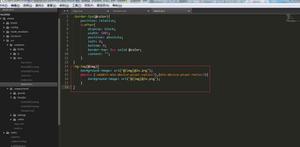webpack开发环境和生产环境的深入理解
以前自己写一小项目时,webpack的配置基本就是一套配置,没有考虑生产环境和开发环境的区分,最近在做一个复杂的商城项目接触到了webpack的高级配置,经过两天的研究,写出了一份目前来说比叫满意的配置,在这里分享一下。
如何区分开发环境和生产环境?
众所周知,webpack时基于node.js平台运行的,要区分开发环境和生产环境还要存,node入手。我们启动webpack时,都需要输入一些命令,npm run 、yarn start之类的,所以我们就从命令行入手,告诉webpack,当前是什么环境。
package.json
{
"name": "webpac-demo",
"version": "1.0.0",
"description": "webpack练习",
"main": "index.js",
"scripts": {
//配置开发环境参数。注意:真实开发中 package.json 文件中不能有注释
"dev": "webpack --env=development",
//配置生产环境参数
"dist": "webpack --env=production",
"start": "webpack-dev-server --env=development"
},
"dependencies": {
"font-awesome": "^4.7.0",
"react": "^16.2.0",
"react-dom": "^16.2.0"
},
"devDependencies":{
...
}
}
这样配置,当我们在命令行输入 npm run dev 和 npm run dist 时,就会附带一些参数到命令行中,有了参数,我们该如何拿到呢?那就要用到 node 的一个命令行参数解析引擎了。
minimist
minimist轻量级的命令行参数解析引擎
// test.js
var args = require('minimist')(process.argv.slice(2));
console.log(args.hello);
$ node test.js --env=production
// production
$ node test.js --env=development
// development
$ node test.js --env
// true 注意:不是空字符串而是true
minimist会把参数解析成一个JSON对象:{key:value},有了这个JSON对象,我们就可以知道,当前的命令是要执行开发打包,还是生产打包了。
// webpack.config.js
const webpack = require('webpack');
//当前项目的绝对路劲
const path = require('path');
// 命令行参数解析引擎
const argv = require('minimist')(process.argv.slice(2));
let env = null;
switch (argv.env) {
case 'production':
//生产环境配置文件名
env = 'webpack.config.prod';
break;
default:
//开发环境配置文件名
env = 'webpack.config.dev';
}
console.log(`当前是 ${argv.env} 打包`);
// 这时候,我们就可以加载相应的wabpack配置了。
module.exports = require( path.resolve( '加载的配置文件路劲',env ) );
webpack开发环境配置和生产环境配置
开发环境配置
在开发环境下,我们首先考虑的是方便开发,方便代码调试,不需要考虑代码合并和css样式分离这些。
这里主要说三个 :1.css模块化;2.模块热替换功能;3.source-map(代码映射)
// 开发环境打包配置
const path = require('path');
const webpack = require('webpack');
const base = require('./webpack.config.base')
const dfPath = require('./path')
// webpack配置合并工具
const merge =require('webpack-merge')
const RS = (...arg)=>path.resolve( __dirname , ...arg )
// 合并方式配置
let strategyMerge = merge.strategy({
entry: 'prepend'
});
let config = {
entry: {
app: path.resolve(dfPath.root,'src/app.js')
},
output: {
path: dfPath.dist,
filename: '[name].bundle.js',
publicPath: '/',
chunkFilename: '[name].sepChunk.js'
},
module:{
rules: [
{
test: /\.js$/,
use:['babel-loader'],
exclude: [
dfPath.node_modules
]
},
{
test:/\.css$/,
use:[
'style-loader',
{
loader:'css-loader',
options:{
// css模块化,方便多人开发
module:true,
// 定义模块化css后的类名(默认为hash值,可读性差)path:路劲; name:文件名; local:本地定义的className
localIdentName: '[path][name]__[local]--[hash:base64:5]'
},
}
],
// 排除的文件,遇到这些文件不会用当前 loader 处理,也就不会模块化
exclude:[
RS('./src/common'),
RS('node_modules')
]
},
{
test:/\.css$/,
use:['style-loader','css-loader'],
include:[
RS('./src/common'),
RS('node_modules')
]
},
{
test: /\.(png|jpg|jpeg|gif)$/,
use: ['url-loader?limit=8192'],
}
]
},
plugins:[
// 模块热替换功能
new webpack.HotModuleReplacementPlugin()
],
// 代码映射,方便报错时,找到对应的源代码
devtool: 'cheap-module-eval-source-map',
devServer:{
// 服务器打包后,输出的资源路劲
publicPath:'/',
open:true
}
};
// 导出合并后的webpack配置
module.exports = strategyMerge( base , config );
生产环境配置
相比开发环境,生产环境打包是要最后发布到服务器部署的代码,我们需要尽量保持代码简洁,加载性能最优,不需要调试辅助工具。
我们从这几个方面优化 :1.公共模块拆分,单独打包;2. css文件分离,单独打包输出;3.代码压缩;
// 生产环境配置
const webpack = require('webpack');
const base = require('./webpack.config.base')
const path = require('path');
const dfPath = require('./path');
const merge = require('webpack-merge');
// 压缩工具
const ClosureCompilerPlugin = require('webpack-closure-compiler');
// css单独打包插件
const extractTextWebpackPlugin = require('extract-text-webpack-plugin');
const extractCSS = new extractTextWebpackPlugin('assets/css/[name]_[contenthash:6].css');
// weback合并配置
let strategyMerge = merge.strategy({
entry: 'replace',
output: 'replace',
module:{
rules: 'replace'
}
});
let config ={
entry: {
// 公共模块拆分,这些代码会单独打包,一般我们会把引用的框架文件拆分出来,方便浏览器缓存,节省资源。
vender:['react'],
app: path.resolve(dfPath.root,'src/app.js')
},
output: {
path: dfPath.dist,
filename: 'assets/js/[name]_[chunkhash].bundle.js',
publicPath: '/',
chunkFilename: 'assets/js/[name].sepChunk.js',
hashDigestLength: 6
},
module:{
rules: [
{
test: /\.js$/,
use:['babel-loader'],
exclude: [
dfPath.node_modules
]
},
/* 开启 css单独打包 和 css模块化的配置 */
{
test: /\.css$/,
use: extractCSS.extract({
use: [
{
loader: 'css-loader',
options:{
modules: true
}
}
]
})
},
{
test: /\.(png|jpg|jpeg|gif)$/,
use: [
{
loader: 'url-loader',
options:{
limit:8192,
name: '[name]_[hash].[ext]',
outputPath: 'assets/img/'
}
}
],
},
{
test: /\.(mp4|ogg|svg|ico)$/,
use: [
{
loader: 'file-loader',
options:{
name: '[name]_[hash].[ext]',
outputPath: 'assets/media/'
}
}
]
},
{
test: /\.(woff|woff2)(\?v=\d+\.\d+\.\d+)?$/,
use: [
{
loader: 'url-loader',
options:{
limit:10000,
name: '[name]_[hash].[ext]',
outputPath: 'assets/font/',
mimetype: 'application/font-woff'
}
}
]
},
{
test: /\.ttf(\?v=\d+\.\d+\.\d+)?$/,
use: [
{
loader: 'url-loader',
options:{
limit:10000,
name: '[name]_[hash].[ext]',
outputPath: 'assets/font/',
mimetype: 'application/octet-stream'
}
}
]
},
{
test: /\.eot(\?v=\d+\.\d+\.\d+)?$/,
use: [
{
loader: 'file-loader',
options:{
name: '[name]_[hash].[ext]',
outputPath: 'assets/font/',
}
}
]
},
{
test: /\.svg(\?v=\d+\.\d+\.\d+)?$/,
use: [
{
loader: 'url-loader',
options:{
limit:10000,
name: '[name]_[hash].[ext]',
outputPath: 'assets/font/',
mimetype: 'image/svg+xml'
}
}
]
},
]
},
plugins:[
extractCSS,
// 设置 process.env(生产环境) 环境变量的快捷方式。
new webpack.EnvironmentPlugin({
NODE_ENV: 'production'
})
,new ClosureCompilerPlugin()
],
devtool: 'source-map'
};
module.exports = strategyMerge(base,config);
以上是 webpack开发环境和生产环境的深入理解 的全部内容, 来源链接: utcz.com/z/349621.html

